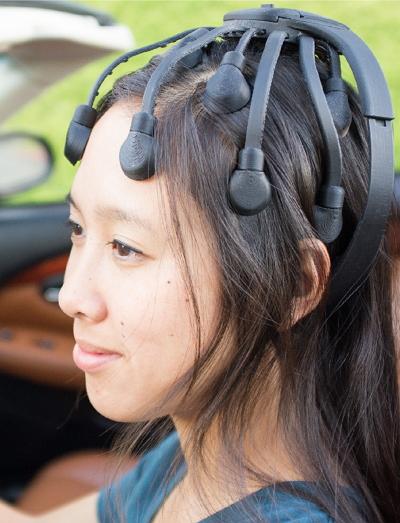
The company has worked with government, university and private customers, and Cognionics’ proprietary technologies enable them to create complete solutions with high signal quality, comfort, performance and cost factors.
Their capabilities include custom dry electrode sensor designs; high-resolution, wireless data acquisition electronics; electro-mechanical integration of circuit boards; wiring and sensors into wearable harnesses; the integration of bioamplifiers and digitizers in low-power systems; embedded electronics design and firmware programming; and high-density ECG and EEG systems
Cognionics says that EEG, or brain-wave monitoring, systems have normally involved the use of connections to the scalp which require the application of gels and adhesives. Those systems are then hard-wired to large, expensive amplifiers.
Several innovative new systems on the market now use dry electrodes connected wirelessly to PCs – and Cognionics says that system saves on setup time and is more convenient and comfortable for subjects.
According to Cognionics, there are three principal challenges to make dry electrode systems effective: accurate sensors, electronics, and comfortable mechanical systems to hold the dry sensors on the head.
They’ve come to rely on nylon filament material which Cognionics uses in situations where parts more durable than ABS-based materials can provide.
“As a result of the complexity we require, these parts would consistently fail with ABS. This headset is subjected to significant amounts of stress,” says Clayton MacIntyre, a Project Engineer at Cognionics. “We have tried numerous materials and taulman3D PCTPE and Nylon 618 fit our needs. In addition to performance, PCTPE and 618 are printer friendly, and have excellent extrusion uniformity. Ultimately, we rely on taulman3D for a system that is unmatched in comfort and data quality.”
The man behind Taulman3D, Thomas Martzall, says he developed his company’s formulations of nylon 618 or nylon 645 specifically for 3D printing.
“No one else is out there using this stuff, it isn’t a commodity nylon in other words,” Martzall told makezine.
Have you ever built 3D printed parts with Taulman 3D Nylon 618 or Nylon 645? What was your experience with those nylon materials? Let us know in the Cognionics and Taulman 3D forum thread on 3DPB.com.
